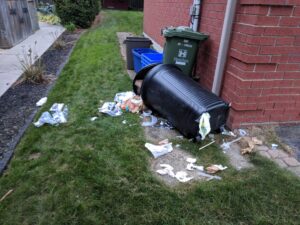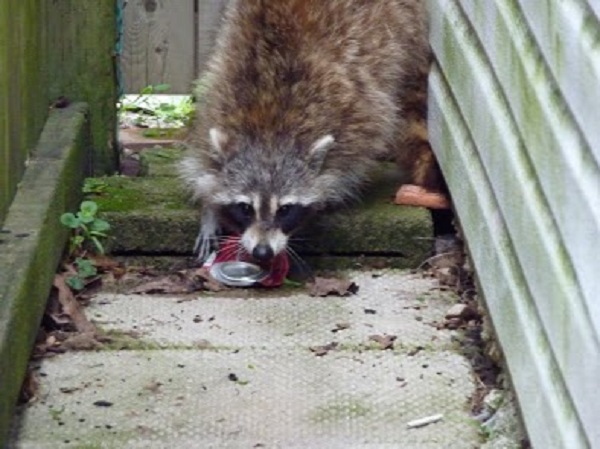It’s natural to want to protect local wildlife, but feeding raccoons on your property is never a good idea. Find out more about the dangers of feeding raccoons, how you may be unintentionally feeding wildlife on your property and how professional raccoon removal can help.
Problems With Intentionally Feeding Raccoons
There are many issues associated with feeding raccoons on your property. Setting out a bowl of food for wildlife or intentionally giving food to a raccoon can cause one or more of these issues:
- Encourages raccoons to stay on your property or enter your home
- Increases the risk of attack or disease
- Risks overpopulation
Raccoons on your property can become nuisances. A single animal may appear to be lonely and in need of assistance, but these wild animals are more than capable of finding their own food and surviving in the wild. Contact a wildlife control expert if you’re concerned about the health and safety of local wildlife rather than feeding it. Feeding a raccoon encourages it to stay on your property and even attempt to enter your home.
These wild animals, along with their feces, are capable of transmitting diseases. They may look like a stray cat or dog, but they can be carriers for diseases like leptospirosis, rabies and more. Raccoons are typically fearful of humans, but continued feeding may cause them to lose their fear and even become aggressive in order to find more food.
A few happy, well-fed raccoons can quickly multiply. Don’t let your home become a raccoon apartment complex. It’s important to work with a professional team to safely remove and prevent wildlife in a humane way. Your garbage or pet food isn’t a healthy food source for these wild animals, so find out how to humanely remove them and send them back to their natural environment and diet.
Accidental Raccoon Feeding
There are a few common ways that well-meaning homeowners still feed raccoons and other wildlife. Check these items to see if they are protected from your local raccoon population:
- Garbage cans
- Pet food
- Birdfeeders

These are the most common sources of unintentional raccoon feeding. A garbage can with a loose lid can be a welcomed meal for a raccoon. This is the most obvious source of accidental feeding because you’ll see the leftover scraps spread all around your area. Raccoons aren’t known for tidy eating.
Pet food is another common source of feeding. This can be harder to discover because you may believe your dog or cat is eating the food you leave out at night. Unless your food bowl is in a secured kennel, there’s a chance your local wildlife may be chasing away your pet and eating its food.
Finally, bird feeders should be secured and proofed against raccoons. If you’ve ever seen a squirrel climb a feeder and sneak some seeds, you can picture how a larger wild animal may do the same. This can deter the local bird population and encourage a raccoon to set up a home in your yard. It’s more difficult than you may realize to protect these food sources from raccoons and other wildlife. These animals are highly skilled at finding easy sources of food, so you need professional strategies to prevent them from entering your home and causing a disturbance.
Professional, Humane Solutions
At Skedaddle Humane Wildlife Control, we use a three-step method to scoot the raccoon. Contact us today if you believe you may have a raccoon eating on your property. We’ll inspect your area for signs of feeding, prevent further incidents and humanely remove any animals that are causing a health and safety concern. Protect your outdoor food sources for your pets and local birds with our help.



